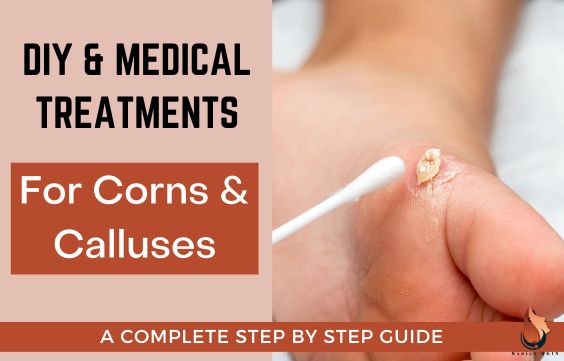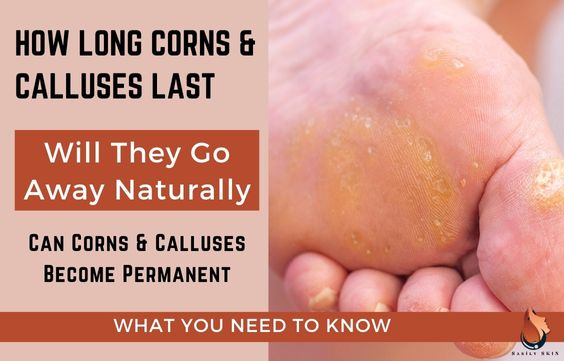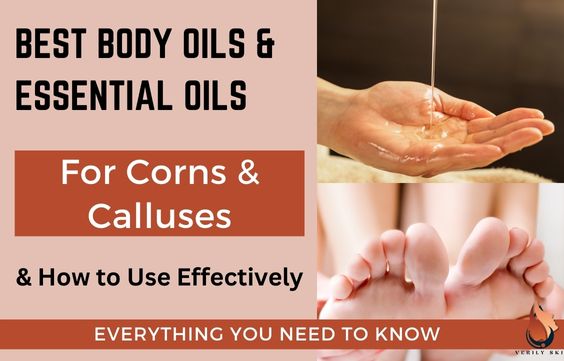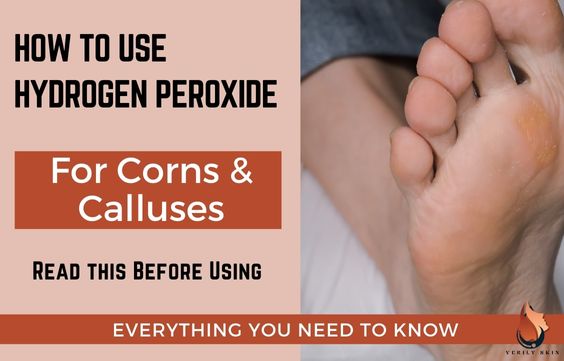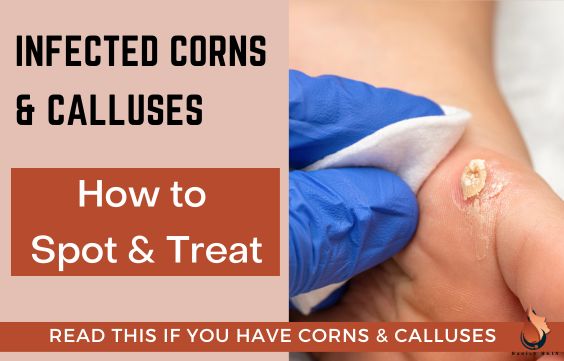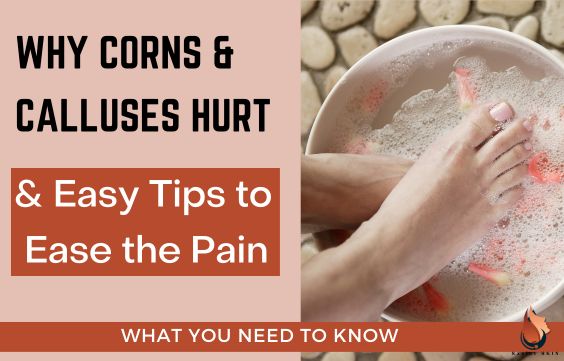Salicylic Acid for Calluses & Corns: What You Need to Know
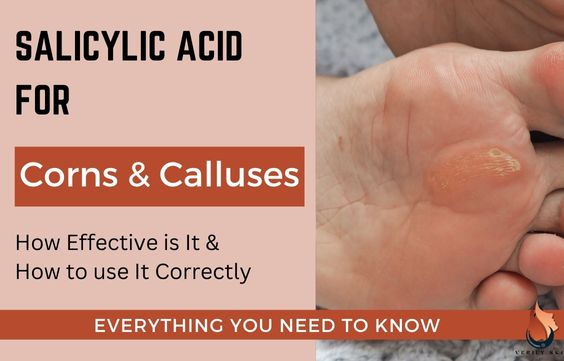
Calluses and corns can cause foot pain and discomfort, and if left untreated, they can have significant consequences. But can calluses & corns be effectively treated with salicylic acid? The short answer is yes.
However, the safest thing to do is to book a consultation with your podiatrist (foot doctor). They will perform a professional assessment of your calluses and/or corns.
But you can DIY treat them at home using Salicylic acid which comes with its own risk. So that’s why we are going to walk you through step by step how to use Salicylic acid on corns and calluses.
What are Calluses & Corns
Calluses are thick, hardened areas of skin that usually form on the soles and sides of the feet. They are caused by persistent strain, pressure, irritation, or agitation.
However, corns are a type of callus that often appears on the smooth, thin skin of the foot, such as the top of the foot and toes. They also vary in hardness and softness. Soft corns develop between the middle toes, whereas hard corns develop on the tops of the toes. When sweat ducts get clogged, seed corns form on the bottom of the foot. You can click here to learn more about the Corns Vs Calluses – Differences
Related Articles –
Tips on How to Prevent Calluses on Your Hands
Why Do Corns & Calluses Hurt & Easy Tips to Ease the Pain
Can You Use Salicylic Acid For Calluses & Corns
Yes, you can use salicylic acid to treat calluses and corns. Usually, the first line treatment for calluses and corns is the manual trimming and debridement of the callus and/or corn.
However, if this does not work, doctors usually recommend using a 40% salicylic acid patch that can be bought over the counter.
You need to read my article on Quick Remedies & Medical Treatments for Corns & Calluses
One of the best ways to treat corns and calluses is to use Hydrogen Peroxide, click here to learn more.
How Does Salicylic Acid Work On Calluses & Corns
Salicylic acid softens and removes the build-up of dead skin from around and over the callus and/or corn.
The hallmark of treating calluses and corns is to soften and remove the build-up of the hard skin that forms them.
Salicylic acid goes deep into the skin to dissolve the bonds that hold skin cells together. This softens and loosens up the skin over and around the calluses, making it easier to remove.
By doing this, and avoiding the pressure and/or friction that cause them, calluses and corns can be managed and prevented.
How to Use Apple Cider Vinegar For Corns & Calluses – What You Need To Know
How to Use Salicylic Acid for Calluses & Corns
Salicylic Acid is usually applied to calluses and corns on a patch which is then applied to the callus or corn.
How long can the salicylic acid patch be left on the callus or corn?
Different kinds of patches will come with different instructions. However, most commonly, the patch is left on for up to 48 hours at a time.
Related Articles:
Infected Corns & Calluses – How To Spot & Treat
Best Essential Oils & Body Oils to Treat Corns & Calluses
How Often Should You Use A Salicylic Acid Patch On Calluses & Corns?
This will depend on how bad your callus and/or corn are. However, most people usually need to use it for up to 14 days. The patch is changed every 48 hours or sooner as necessary.
7 Tips on How to Prevent Calluses & Corns on Your Feet
How Long Will A Salicylic Acid Patch Take To Remove A Callus Or Corn?
Generally, calluses & corns are effectively treated using 40% salicylic acid within 14 days.
If they do not resolve by then, you should see your doctor. Your callus or corn could be caused by a medical condition, lifestyle issues, or other problems. Or, it could need a more aggressive kind of treatment.
Related Article – How Long Calluses & Corns Last & Do They Go Away Naturally
What Is The Best Concentration Of Salicylic Acid For Calluses & Corns?
The safest concentration of salicylic acid that you should use for calluses and corns is between 12% and 40%.
If you think that you need to use anything stronger than 40%, you should see a doctor first.
Salicylic acid is a strong active ingredient. While some people’s calluses and corns may be thick and stubborn and require strong treatment, some may not be as difficult.
Therefore, I recommend that you see a podiatrist before starting any salicylic acid treatment for your calluses and corns.
An alternative is to also start your treatment with a low concentration first and see how that works. If your skin can tolerate it, or if you need a stronger treatment, you can gradually use stronger concentrations of salicylic acid.
Precautions When Using Salicylic Acid for Calluses
- Keep in mind that you should not be using strong concentrations of salicylic acid if you are pregnant or breastfeeding.
- Patch test your skin before going ahead with the treatment to prevent any allergic reactions or irritation.
- If you are diabetic, you should not use salicylic acid on your own to remove corns and calluses. This can lead to a diabetic foot infection if not done and monitored properly.
- Let your doctor know if you have kidney or liver disease as this medication, even though it is being used topically, could be bad for you.
Other Care Tips For Calluses & Corns
- Use doughnut-shaped adhesive pads to cover your corn or callus, or create your doughnut pad. The corn should be in the doughnut’s center hole region. You may buy callus and corn pads from your neighborhood pharmacy. Padding eases discomfort and pressure while protecting the corn or callus from irritants.
- Wear shoes that are the right size and form for your feet. Use footwear with wider and higher toe spaces. This may sound strange but after a long day, when your feet are a little swollen, is a great time to purchase shoes.
- Trim your toenails regularly. Long toenails can create friction and discomfort when your toes rub up against the top of your shoe. Trim toenails in a straight line. Avoid cutting corners.
- Apply a cold compress. Do this for about 10 to 20 minutes at a time if your corns or calluses are painful. This will lessen the discomfort and swelling.
- Never use a sharp tool to try to cut out, shave off, or remove corns or calluses.
- If you have diabetes, poor circulation, are prone to infections or have sensitive skin, you shouldn’t attempt to remove corns or calluses. Go to the doctor.
Video of How to treat corns & calluses
Best Salicylic Acid Patches For Callus & Corns
1- Curad Mediplast Corn, Callus, & Wart Remover
A common remedy of choice for corns, calluses, and warts is curd media last. The cut-to-fit pads are practical and simple to employ.
Salicylic acid (40%), which is frequently suggested by doctors and pharmacists for the elimination of corns, calluses, and warts, is the active component in Mediplast.
Click here to check out the Curad Mediplast Corn, Callus, & Wart Remover on Amazon.
2- Dr. Scholl’s Duragel Callus Removers
Advanced DURAGEL technology in Dr. Scholl’s Callus Removers surrounds calluses and hard skin with a thin, flexible gel to instantly relieve uncomfortable shoe pressure and friction.
Using 40% salicylic acid, the Maximum strength medicated discs safely and efficiently eliminate calluses.
Click here to see the Dr. Scholl’s Duragel Callus Removers on Amazon.
3- Dr. Scholls Corn Removers
These pads remove corns fast – with as few as 2 treatments. The maximum strength medicated discs (40% Salicylic Acid) soften corns and removes them safely.
The soft foam pads also help to cushion the corn from painful shoe pressure and friction. They are designed to stay on all day.
Click here to check out Dr. Scholls Corn Removers on Amazon.
Related Articles:
Salicylic Acid For Oily Skin – What You Need To Know
Moisturizing After Salicylic Acid: What To Do & Use
Skin Purging from Salicylic Acid: How to Spot & Treat
Best Salicylic Acid Soaps – Benefits, Risks & How To Use
Sources:
How to treat corns and calluses
Salicylic Acid (Topical Route) Precautions – Mayo Clinic
Corns and Calluses Treatment and Symptoms | Advanced Foot & Ankle

